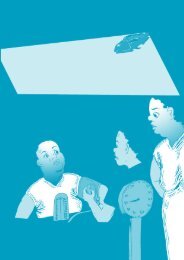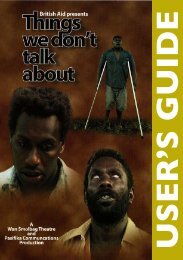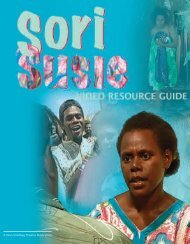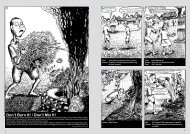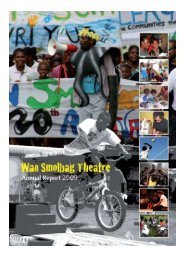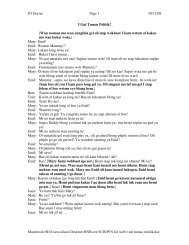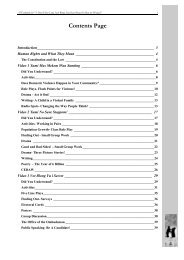Create successful ePaper yourself
Turn your PDF publications into a flip-book with our unique Google optimized e-Paper software.
12. Make a Sound Story!Sound stories only use sounds. The sounds can be made with objects of any kind:stones, pieces of wood, water in a dish or a bucket or the human voice. The soundstories can include laughter, screams, yawns and cries, but no clear words. Thesesound stories will help you think about sound and the need for sound effects andsound "pictures" when we listen to the radio.What You Need• Copies of the stories below• Tables or desks to hide behind• Buckets, dishes, pieces of wood for making noises• The support of other teachers!What To Do• Divide your class into groups of five or six.• Give out one of the stories to each group if possible. [Suggested stories below.]If there are more than seven groups, more than one group can do the samestory.• They should practice behind a turned up desk or table.• They will need fifteen to thirty minutes to practice their story and work out how dosound effects (eg. rain = fingers drumming on wood).• One member of the group should be the director and sit outside and listen to thesounds the group is making, to check the sounds are loud enough – make theright sound picture – the story is clear and can be understood.• The groups should perform their sound story for the whole class who must thenretell what happened in English or Bislama.Gather together things you think will be useful to make your soundstory and then discuss the story with your group.12 <strong>Wora</strong> <strong>Hemi</strong> <strong>Laef</strong> - A Work Book



